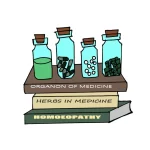
This is the first post in the course of bacteriology so, we will be starting from the Basics of bacteriology.
We will learn about some Historical facts, General characteristics of bacteria and will compare them with plant kingdom.
Table of Contents
ToggleINTRODUCTION TO BACTERIOLOGY
The word Bacterium (Greek Bakterion = little rod) was originally applied for the rod shaped organism which belonged to the lowest order of the plant life.
[Note: words with ( * ) are particularly defined at the end of this post].
DISCOVERY OF BACTERIA
- Antony Von Leeuvenhoek (1632 – 1723), the Dutch merchant of Holland, discovered the bacteria.
- He observed bacteria in the scum of teeth with the help of microscope constructed by himself.
- He named them as “Tiny animalcules“.
- In 1695 he published his work “The secrets of nature discovered by Antony Van Leeuvenhoek”.
- He is known as the “Father of Bacteriology”.
Later Ehrenberg (1829) gave the term BACTERIA for these microorganisms.
The exact meaning of bacteria is a small stick.
Carl Weigert (1845-1904) invented the staining technique for bacteria.
T.J. Bwoul (1878) observed the bacteria as the cause of diseases in plants.
GENERAL CHARACTERS OF BACTERIA
Bacteriology is the branch of botany which deals with the study of metabolism and reproduction of bacteria.
The general qualities of bacteria are:
- Present in soil, air and water (omnipresent).
- Unicellular, prokaryotic microorganisms.
- Thick rigid cell wall outside the plasma membrane (they are kept in plant kingdom due to this character).
- Autotrophic* and Heterotrophic* methods for nutrition.
- Lack of true chlorophyll. (however, few photosynthetic bacteria have a special type of chlorophyll called bacteriochlorophyll).
- Lack of true nucleus as they are prokaryotes*.Their genetic material remains in form of complex structure known as gonophore/ nucleoid/ incipient nucleus.
- The cell wall is buildup of mucopeptide.
- Absence of mitochondria, Golgi apparatus, plastid* & endoplasmic reticulum.
- DNA do not contain the basic protein histone.
- Contain many types of Ribosomes.
- Plasma membrane forms folds of mesosomes.
- Cell membrane holds all the enzymes needed for respiration.
- Both DNA and RNA are present in the bacterial cell.
- Vegetative reproduction by binary fission, cyst, budding and gonidia*.
- Asexual reproduction by conidia*, motile spores and endospore.
- True sexual reproduction is absent in bacteria.
- Genetic recombination may be of conjugation, transduction and transformation.
PLANT LIKE CHARACTERISTIC IN BACTERIA
Cohn (1872) recognized the presence of cell wall in bacteria (which is a similar character to plants).
The factors responsible for keeping bacteria in plant kingdom are:
- In few bacteria the cell wall is made up of cellulose.
- They show filamentous growth.
- Autotrophic bacteria prepare carbonic food by the use of inorganic substances (C02 and H20).
- Structure and some mode of reproduction of bacteria is similar to some members of thallophyte*.
- Just like plants, they absorb the nutritional substances in the soluble form via their cell wall.
- They are able to convert inorganic nitrogen into all types of -NH2 acids.
SIMILARITIES BETWEEN BACTERIA AND BLUE GREEN ALGAE
- Both have prokaryotic nucleus.
- Both are unicellular.
- Similar cell shapes i.e. spherical, cylindrical and spiral & gelatinous sheath.
- Filamentous structure.
- Similar cell wall structure and cell division.
- Lack of typical cellular organelles.
- DNA with no histone proteins.
- No formation of zoospores during asexual reproduction.
- Resistant to desiccation and high temperatures.
- Blue green algae can live on dead organic matter in the absence of light. (like saprophytic* bacteria).
- Blue green algae and bacteria, both shows genetic recombination.
DISSIMILARITIES BETWEEN CYANOBACTERIA AND BACTERIA
- Cyanobacteria are always non flagellate while most of the bacteria are flagellate.
- All cyanobacteria are aerobic while many bacteria are anaerobic.
- All cyanobacteria have chlorophyll for photosynthesis while bacteria have bacteriochlorophyll.
- The source of hydrogen is H20 in cyanobacteria while H2S in bacteria.
REFERENCE TERMINOLOGIES
Autotrophic– The organisms which are capable of making their own food with the use of inorganic substances, photosynthesis or chemosynthesis.
Heterotrophic (hetero means other)- The organisms which are not capable of making their own food, so they need to consume other materials like animals or plants in order to survive.
Plastid– Plastids are organelles which are present into plants or algae. Their main function is preparation and storage of the food.
Gonidia– Asexual reproductive cell or a group of cells.
Conidia– Asexually produced spores.
Prokaryotes
- No membrane bound nucleus.
- Cell walls made up of peptidoglycan.
- No membrane bound organelles.
- Have pili & fimbriae for adhesion and flagella for propulsion.
- Mucilaginous capsule present.
- Cell size ranges from 0.5-100 µm.
- Example- bacteria & blue green algae.
Eukaryotes
- Membrane bound nucleus.
- Cell walls, if present, made up of cellulose.
- Membrane bound organelles.
- Have cilia & flagella for movement.
- No presence of mucilaginous capsule.
- Numerous internal structures present like microtubules, endoplasmic reticulum, Golgi apparatus, secretory vesicles etc.
- Cell size ranges from 10-150 µm.
- Examples- Algae, fungi & parasites (protozoa & helminths).
Viruses are classified neither prokaryotes nor eukaryotes because they have no living characteristics except the ability to replicate.
Saprophytes-The organisms that lives on dead organic substances like bacteria.
Thallophyte– They are simple plants in the plant kingdom.













Leave a Reply